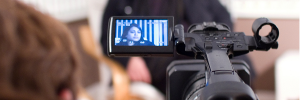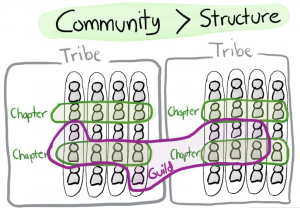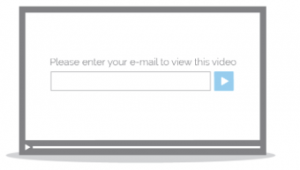Now that the United States is safely re-opening, organizations are navigating how to support employees as they return to the office – or choose to remain remote permanently. In a drastic turn from 15 months ago, a majority (68 percent) of business leaders support adopting long-term hybrid work arrangements and a notable minority are convinced that the office is no longer necessary. With major companies like Salesforce, Square, Shopify and Slack all adopting permanent hybrid work, the future certainly seems to belong to working everywhere.
Yet even as a return to the office is hailed as a return to “normal,” the norms and expectations of office workers have evolved with the influence of the WFH culture. Personal lives have crept into work lives, and vice versa. As employees shift back into the office, they’ll expect a more casual office culture that offers flexible working hours, a relaxed dress code, and more emphasis on socializing with coworkers.
For marketing leaders, this change represents an opportunity to refocus team culture to maximize collaboration and creativity.
Human Before All
Somewhat counterintuitively, seeing coworkers primarily through screens over the past year has helped teammates see each other in a more human light. Zoom calls provided digital windows into makeshift offices, kitchens, dining rooms, and other living spaces with regular appearances by spouses/partners, children, and pets. Employees are acutely aware of the demands of life that take place outside of work, both for themselves and for their teams, and they expect flexible hours that emphasize results over presence in the office.
Consider the wide range of skills and energy needed to deliver as a marketing professional: creativity, data analysis, strategic thinking, and communication, to name a few. Marketing is also home to high burnout roles like PR and social media management, which can hurt team performance and collaboration if not proactively managed.
With flexible working arrangements, marketing executives can establish common goals and milestones that guide their teams while also empowering individual members to choose the schedule that works best for them. Employees will be more engaged, less prone to burnout, and ultimately more innovative.
A New Creative Canvas
Even before the pandemic, 1-in-3 employees said they would quit their job if they were required to follow a conservative dress code. After a year of sweatpants, leggings, and other casual wear, that number is no doubt even higher. And since the likelihood is that even the sharpest dressed employee is wearing pajama bottoms out of their laptop camera’s view, it’s clear that strict or formal dress codes are fading from popularity.
For marketing leaders, in particular, this is an opportunity to encourage a greater cultural shift and foster more creative thinking and productivity. Research has shown that employees are more innovative when they’re able to express themselves and feel heard in the workplace. Dress codes are a simple way to address both needs while also smoothing the transition back to the office.
The True Purpose Of The Office
Finally, long-term hybrid work has redefined the fundamental role of the office. A survey by PwC found that employees now list “collaboration” and “meeting with client or coworkers” as two of the top three purposes for office space. Marketing needs to consider how the new office culture supports the more social aspects of work, such as brainstorming sessions and cross-functional meetings.
Evidence suggests that most employees will spend 40-60% of their time in the office, limiting the amount of time marketing teams spend together as well as with collaborators from the product, legal, and sales department. Communication across virtual and in-person channels is key to keeping teams connected socially, yet ensure that office work is productive.
Though seemingly minor, emojis make communications more lively, human, and conversational. Accepting them at work not only provides essential non-verbal cues for remote work but also fosters a closer sense of connection for marketers that are meeting in the office.
In A Nutshell
Remote and hybrid work is here to stay, no question about it. But marketing teams are uniquely positioned to take advantage of the new, casual work culture that’s emerging in its wake.
Even as organizations turn their attention to transitioning the workforce back to the office, marketing leaders need to consider how the expectations and needs of their employees have shifted to maximize creativity and collaboration so that teams are more engaged, empowered, and yes, more human.
Business & Finance Articles on Business 2 Community
(50)
Report Post






